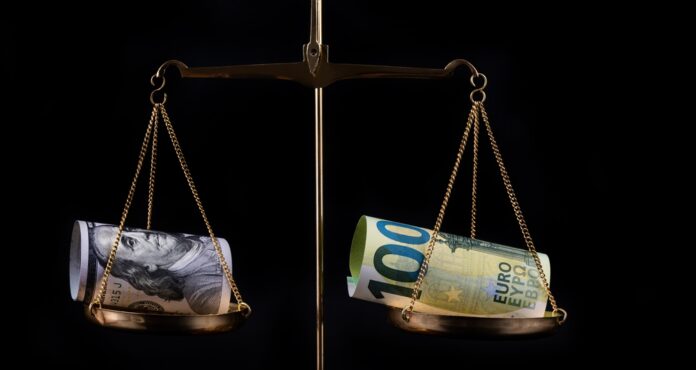The U.S. dollar wavered on Tuesday, lingering near a three-year low as investor confidence remains shaken by the Trump administration’s erratic trade policies.
As of 04:45 ET (08:45 GMT), the U.S. Dollar Index — which measures the greenback against six major currencies — edged down to 99.395, holding close to the lows reached last week. The index is now down over 4% this month, on track for its steepest monthly loss since November 2022.
Trade Uncertainty Undermines Dollar Confidence
Investor sentiment continues to deteriorate as the Trump administration’s inconsistent tariff announcements stir market volatility.
“Markets retain a substantial risk premium attached to U.S. assets, including the dollar,” noted ING analysts. “We estimate this ranges between 2% and 5% across major G10 currencies, though elevated FX volatility means these estimates should be treated with caution.”
On Monday, President Trump suggested possible exemptions from the proposed 25% tariffs on foreign auto imports, particularly for Mexico and Canada. Exemptions were also granted on specific electronics—mainly smartphones and laptops from China—easing some market fears over escalating trade tensions.
Despite these moves, market signals remain bearish. “Option markets are clearly pointing to continued downside risks for the dollar,” ING added. “Even if the worst of the dysfunction is behind us, the damage from chaotic policy decisions will take time to reverse.”
EUR/USD Eyes 1.15 Amid Dollar Weakness
The euro inched up 0.1% to 1.1361, remaining just below last week’s three-year high of 1.1474. Analysts believe a push toward 1.15 is increasingly likely.
“The euro remains a preferred safe-haven route away from the U.S. dollar,” ING commented.
However, focus will shift to the European Central Bank’s policy meeting on Thursday. Markets are pricing in a 25 basis point rate cut, which would lower the ECB’s deposit rate to 2.25%, as the central bank pivots toward supporting growth amid a strong euro and slowing inflation.
“The euro’s strength gives the ECB room to act,” said Seema Shah, chief global strategist at Principal Asset Management. “Growth forecasts have been revised down across the board, allowing policymakers to shift their focus accordingly.”
GBP Gains on Strong Wage Growth
The British pound climbed 0.4% to 1.3230 following fresh labor market data. While the U.K. unemployment rate held steady at 4.4% in February, wage growth surprised to the upside at 5.9% year-on-year, up from a revised 5.8% in the prior month.
Although the Bank of England held rates steady in March, expectations are rising for a quarter-point cut in May due to potential fallout from U.S. trade tensions.
Aussie Dollar Rises, Yen Holds Strong
In Asia, the Australian dollar jumped 0.6% to 0.6354 after the Reserve Bank of Australia released meeting minutes confirming its decision to hold rates in April, citing global trade uncertainty as a key concern.
Meanwhile, USD/JPY dipped slightly to 142.92, with the yen holding near six-month highs as safe-haven demand remained firm.
USD/CNY edged up 0.1% to 7.3152 as trade tensions between Washington and Beijing continued to simmer.



